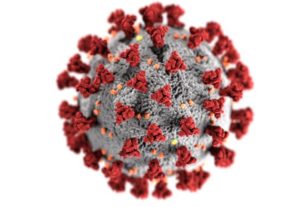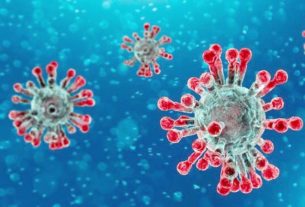From Our Bureau
6TH JUNE 2020
The Corona Virus (CPVID-19) pandemic situation remained grim globally, with the confirmed cases across the world soaring to 66,63,304 and the death toll reaching 3,92,802 in the 216 affected countries and territories, according to the latest update from the World Health Organization (WHO).
Globally, European region continued to be the worst-hit in terms of fatalities with 22,49,999 confirmed cases and 1,83,128 deaths. American region came next with 31,55,370 confirmed cases and 1,76,167 deaths. Eastern Mediterranean region reported 6,05,026 confirmed cases and 14,024 deaths.
Western Pacific region’s tally stood at 1,89,030 confirmed cases and 7,092 deaths. South-East Asia region recorded 3,36,577 confirmed cases and 9,316 deaths and African region witnessed 1,26,561 confirmed cases and 3,062 deaths. WHO Risk Assessment at global level remained very high.
Community health mobilizers are on the frontlines of Angola’s COVID-19 response, increasing awareness of COVID-19 among the general population by conducting home visits and social mobilization campaigns in local markets and other busy communal areas.
This year on World Environment Day on 5th June, people around the world celebrated biodiversity and called for the preservation of nature, as human impact on the environment has increased the risk of emerging infectious diseases in humans: over 60 percent of emerging infectious diseases originate from animals, mainly from wildlife.
The need to lessen our impact on the environment is being emphasised in the context of post-COVID-19 recovery, in order to reduce at source the risk of future epidemics.
Subject in Focus:
Key planning recommendations for mass gatherings in the context of COVID-19
WHO has published an updated interim guidance on Key planning recommendations for mass gatherings in the context of COVID-19 on 29th May 2020. This general guidance is an updated version of the guidance first published on 14 February and revised on 19 March 2020. The current version reflects the evolution of the pandemic and the most recent WHO recommendations on COVID-19.
The guidance provides advice to host governments, health authorities and event organizers on containing COVID-19 risks associated with a mass gathering, and on mitigating the resulting likelihood of strain on health services.
Mass gatherings include a wide range of events characterized by the concentration of people in space and time. They are not merely recreational events; rather, they may also have major political, cultural, social and economic implications. WHO recommends that any decision to restrict, modify, postpone, cancel or proceed with a mass gathering should be based on a rigorous risk assessment, based on three main considerations:
1. Normative and epidemiological context in which the event takes place: the application of restrictive public health and social measures to control the spread of COVID-19, may not allow mass gatherings to take place. However, in countries where measures are eased in response to an evolving transmission scenario, the decision to proceed with an event and how to proceed, becomes relevant. The context continuously evolves, which entails an evolution of risk and of the action required to mitigate it, and therefore calls for a review of the risk assessment at regular intervals.
2. Risk factors associated with the event: this evaluation examines factors which determine the risk profile for an event, including the characteristics of the venue, the number and key features of the participants (and their expected interactions), the duration of the event, and the capacity of the health system to detect and manage COVID-19 cases, among others.
3. Prevention and control measures: this area focuses on the capacity that host governments, health authorities and event organizers have to apply actions that mitigate the risk identified in step 2, above. Measures may modify the characteristics of the event (venue, attendees, facilities, etc.) or focus on strengthening the preparedness and response. Prevention and control measures can be applied throughout the event’s timeline – in the planning phase, operational phase, and post-event phase.
WHO has developed tools that facilitate the evaluation of the risks associated with a mass gathering and guide the selection of tailored prevention and control measures. A set of three tools is currently available: a generic tool, one tailored to sports events, and one tailored to religious events. At the same time, many organisers have adapted and tailored WHO tools to specific purposes, especially for sport-related events, such as football, rugby and rowing competitions – with the aim of guiding the decision-making process on closing down or reopening them.
A mass gathering indicator has been included in the COVID-19 Strategic Preparedness and Response Plan (SPRP) Monitoring and Evaluation Framework. This will help monitor how health systems prepare and respond to the COVID-19 pandemic as well as how they tackle risks associated with mass gatherings. (eom)


